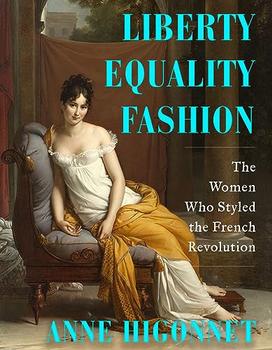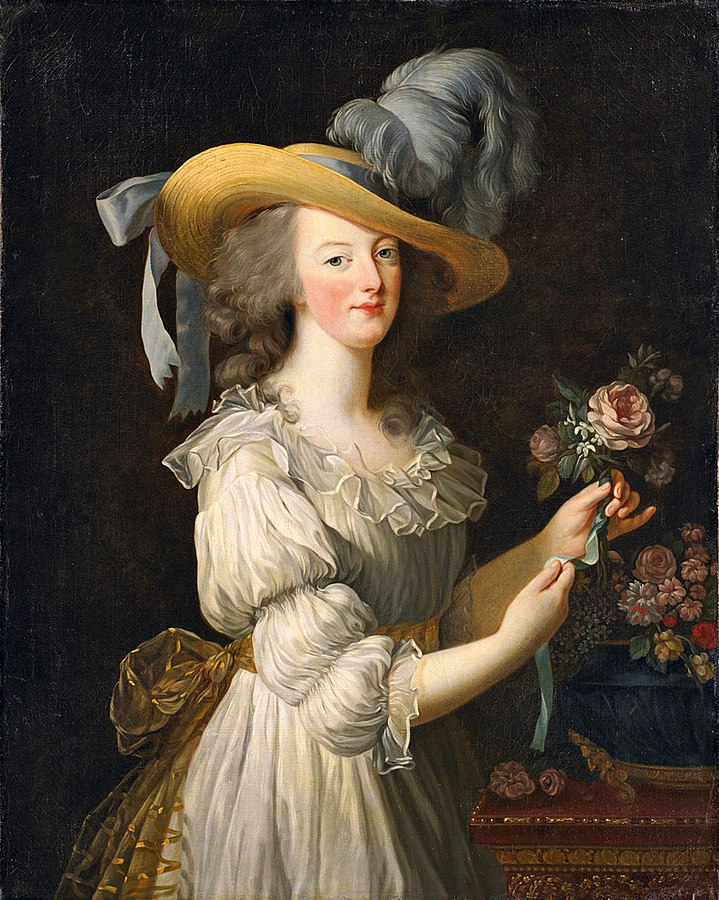Summary | Excerpt | Reviews | Beyond the Book | Read-Alikes | Genres & Themes | Author Bio

The Women Who Styled the French Revolution
by Anne HigonnetThis article relates to Liberty Equality Fashion
 In 1783, Marie Antoinette made a terrible faux pas—she dressed like a commoner. Painted by her favorite portraitist, Élisabeth Louise Vigée Le Brun, the queen was depicted in a loose cotton dress, comfortably tied at the waist with no corset. Although one may think this would have endeared her to the citizenry, it only served to scandalize the society that had come to see her as the pinnacle of luxury fashion. As Nancy Goldstone describes in In the Shadow of the Empress, "Nothing sells like high-end celebrity, and the more flagrantly grandiose Marie Antoinette's style, the more she became an object of public fascination."
In 1783, Marie Antoinette made a terrible faux pas—she dressed like a commoner. Painted by her favorite portraitist, Élisabeth Louise Vigée Le Brun, the queen was depicted in a loose cotton dress, comfortably tied at the waist with no corset. Although one may think this would have endeared her to the citizenry, it only served to scandalize the society that had come to see her as the pinnacle of luxury fashion. As Nancy Goldstone describes in In the Shadow of the Empress, "Nothing sells like high-end celebrity, and the more flagrantly grandiose Marie Antoinette's style, the more she became an object of public fascination."
Early in her reign, Marie Antoinette became famous for her extravagant dresses and elaborate hairdos, including the white wigs we so often associate with the palace of Versailles. She also became infamous for the amount she spent on clothes and jewels, convincing her husband, King Louis XVI, to spend lavish sums on diamonds and ignoring the advice of her mother, Empress Maria Theresa, to show some restraint.
By the time the 1783 portrait showed her dressed in relaxed style, everyone decried it as ridiculous, and she quickly had Le Brun paint a new, grander portrait of her in a standard gown. One can understand why Marie Antoinette would have become tired of the ostentatious dresses and accessories she typically wore—as Anne Higonnet describes in Liberty Equality Fashion, dressing was an hours-long affair with absurd levels of etiquette:
"No one was thinking about covering a naked woman. They were calculating whose great-grandmother's cousin's brother-in-law had inherited which title from whose duke, how that was modified by last week's court intrigue—and does the equation Rank divided by Gossip mean it's me or you who has the privilege of putting underwear on the queen?"
But as in so many other ways, Marie Antoinette was trapped between the conservatism of the ancien régime and the desires of a young woman—a teenager even—while in the spotlight. Her penchant for finery eventually contributed to popular fury with the monarchy.
In 1784, a cardinal attempting to win the queen's favor was duped into buying an extravagant diamond necklace weighing over 2,000 carats and costing 1.6 million livres (the French currency at the time). The hapless cardinal believed he was acting as a go-between and Marie Antoinette would reimburse him for the necklace. In reality, he was being fleeced by some con artists who said they were giving the necklace to the queen. The scam involved a woman in the shadows pretending to be Antoinette assuring the cardinal she would pay him back—a woman wearing the same type of loose muslin gown from the 1783 portrait.
Marie Antoinette never intended to purchase this necklace, and the cardinal was arrested and charged with stealing it in 1785. However, a sympathetic court acquitted him, and public opinion was that the notoriously spendthrift queen certainly would have purchased such an expensive piece of jewelry. Marie Antoinette's reputation never recovered, and just three years later, widespread anger with the monarchy for all manner of extravagance helped drive the outbreak of the French Revolution. Her notoriety for luxury fashion and the negative connotations that it carries still dominate our perceptions of her today.
Marie Antoinette in a Chemise Dress by Elisabeth Louise Vigée Le Brun, 1783, courtesy of Wikimedia Commons
Filed under People, Eras & Events
![]() This article relates to Liberty Equality Fashion.
It first ran in the May 15, 2024
issue of BookBrowse Recommends.
This article relates to Liberty Equality Fashion.
It first ran in the May 15, 2024
issue of BookBrowse Recommends.
Your guide toexceptional books
BookBrowse seeks out and recommends the best in contemporary fiction and nonfiction—books that not only engage and entertain but also deepen our understanding of ourselves and the world around us.